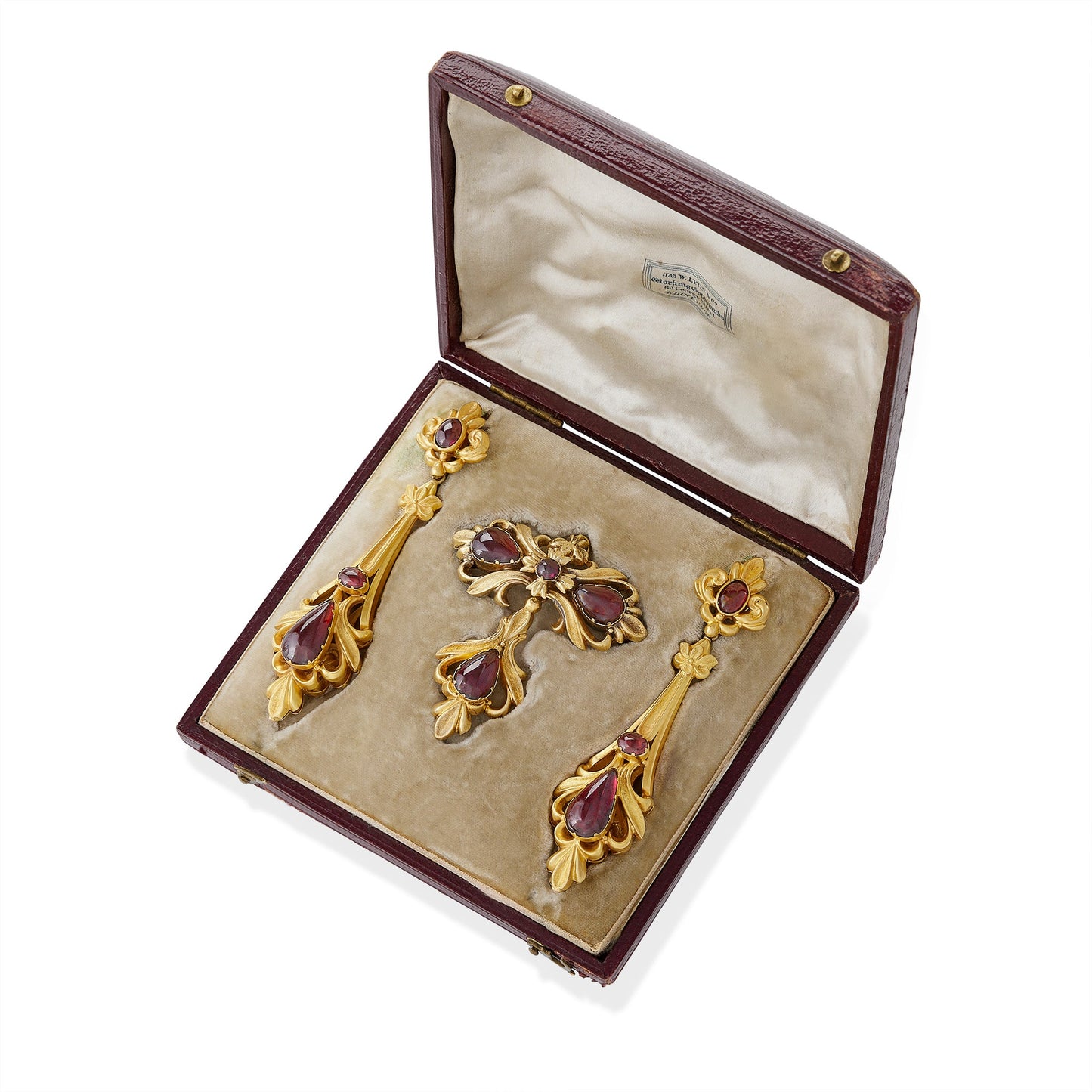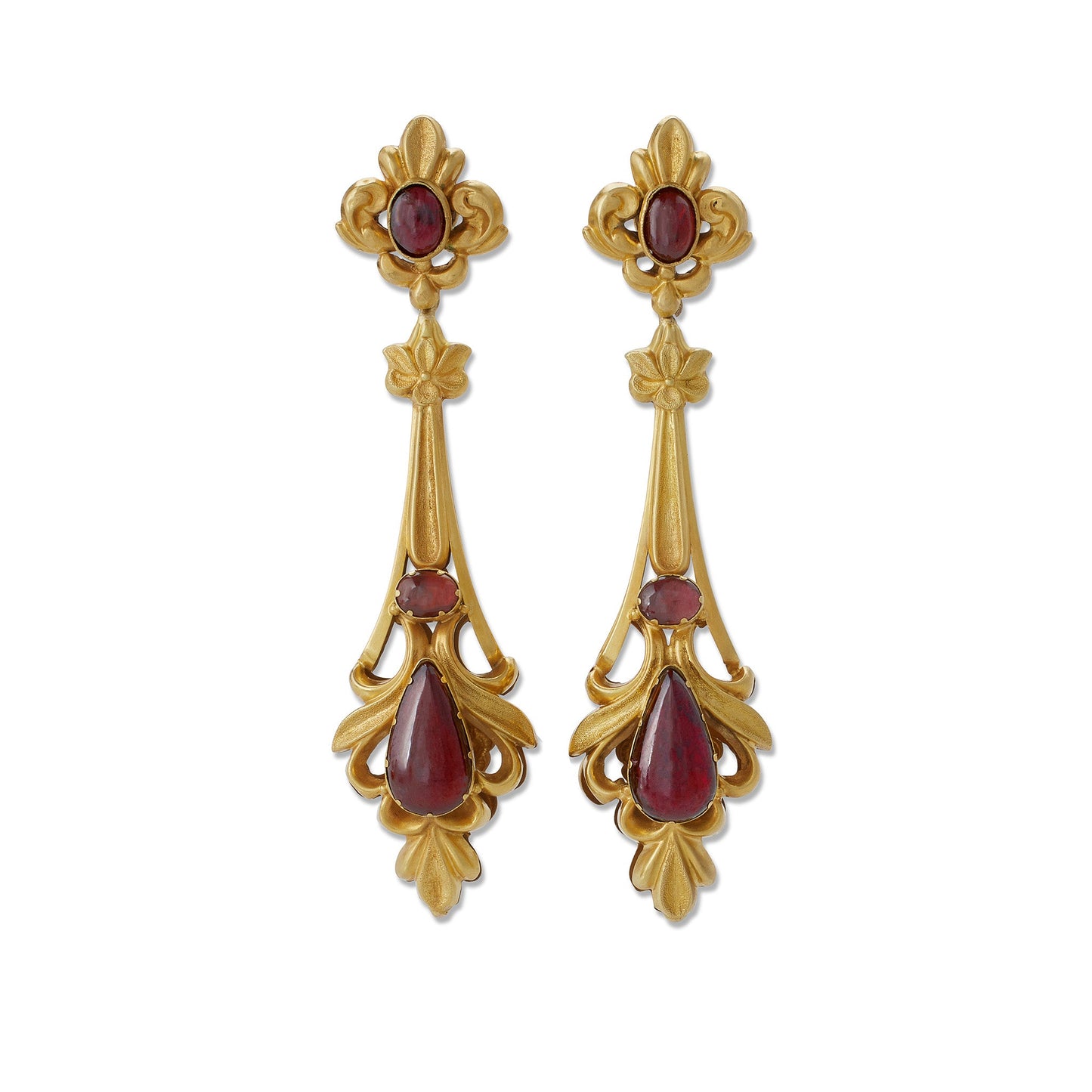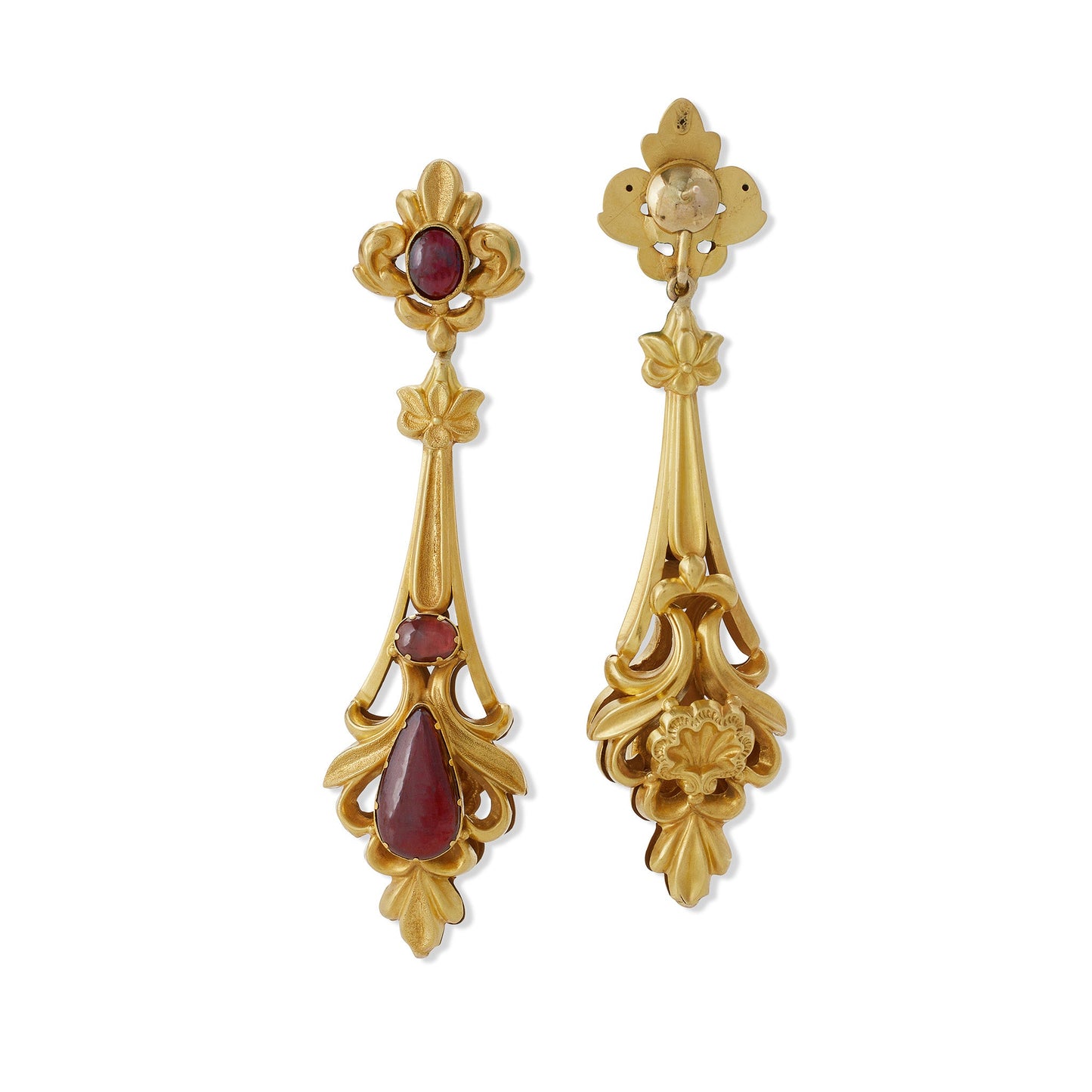English Cabochon Garnet Pendant Earrings and Pendant Necklace
Item #: STE-20655
Artist: James W. Lyon, Edinburgh
Country: Scotland
Circa: 1860's
Dimensions: Earpendants: 3" length; Pendant Brooch: 2.5" length; Chain: 13.5" length
Materials: Cabochon almandine garnet (with approximate total weight 6.10 carats); Cabochon almandine garnet (with approximate total weight 4.05 carats); 15K Gold; fitted original box from James W. Lyon, Edinburgh.
Literature: A substantially similar demi-parure in the collection of the Victoria and Albert Museum, London, is pictured in Jewellery in the Age of Queen Victoria, by Charlotte Gere and Judy Rudoe, p.17. The image of the demi-parure is accompanied by an image of a lithograph of a young Queen Victoria wearing a substantially similar demi-parure.
Item #: STE-20655
Artist: James W. Lyon, Edinburgh
Country: Scotland
Circa: 1860's
Dimensions: Earpendants: 3" length; Pendant Brooch: 2.5" length; Chain: 13.5" length
Materials: Cabochon almandine garnet (with approximate total weight 6.10 carats); Cabochon almandine garnet (with approximate total weight 4.05 carats); 15K Gold; fitted original box from James W. Lyon, Edinburgh.
Literature: A substantially similar demi-parure in the collection of the Victoria and Albert Museum, London, is pictured in Jewellery in the Age of Queen Victoria, by Charlotte Gere and Judy Rudoe, p.17. The image of the demi-parure is accompanied by an image of a lithograph of a young Queen Victoria wearing a substantially similar demi-parure.
Queen Victoria, whom the artistic record shows owned a substantially similar demi-paure, was deeply interested in couture and jewelry. Often, she chose to wear jewelry by British makers, in many cases work that was historically inspired and/or sentimental, knowing that her choices were closely observed by the public. These jewels were often relatively modest in value, and accessible to aspiring women of the British middle class.
Blood-red cabochon-cut gems have been known throughout history as "carbuncles", and their use in gold jewelry was highly popular in the sentimental, symbolism-loving Victorian period in England. In the 19th century, the new study of of archaeology had revealed that the garnet was a favorite precious stone of the Hellenistic Greeks, who centered carbuncles in wedding jewelry such as gold bracelets and garment appliqués fashioned into Heraklean knot motifs, symbolizing indissoluble bonds. At the same time, Hellenistic-era Greeks also set these vivid gems in extravagant thumb rings, worn for the pleasure of pure ostentation alone.
Queen Victoria, whom the artistic record shows owned a substantially similar demi-paure, was deeply interested in couture and jewelry. Often, she chose to wear jewelry by British makers, in many cases work that was historically inspired and/or sentimental, knowing that her choices were closely observed by the public. These jewels were often relatively modest in value, and accessible to aspiring women of the British middle class.
Blood-red cabochon-cut gems have been known throughout history as "carbuncles", and their use in gold jewelry was highly popular in the sentimental, symbolism-loving Victorian period in England. In the 19th century, the new study of of archaeology had revealed that the garnet was a favorite precious stone of the Hellenistic Greeks, who centered carbuncles in wedding jewelry such as gold bracelets and garment appliqués fashioned into Heraklean knot motifs, symbolizing indissoluble bonds. At the same time, Hellenistic-era Greeks also set these vivid gems in extravagant thumb rings, worn for the pleasure of pure ostentation alone.























